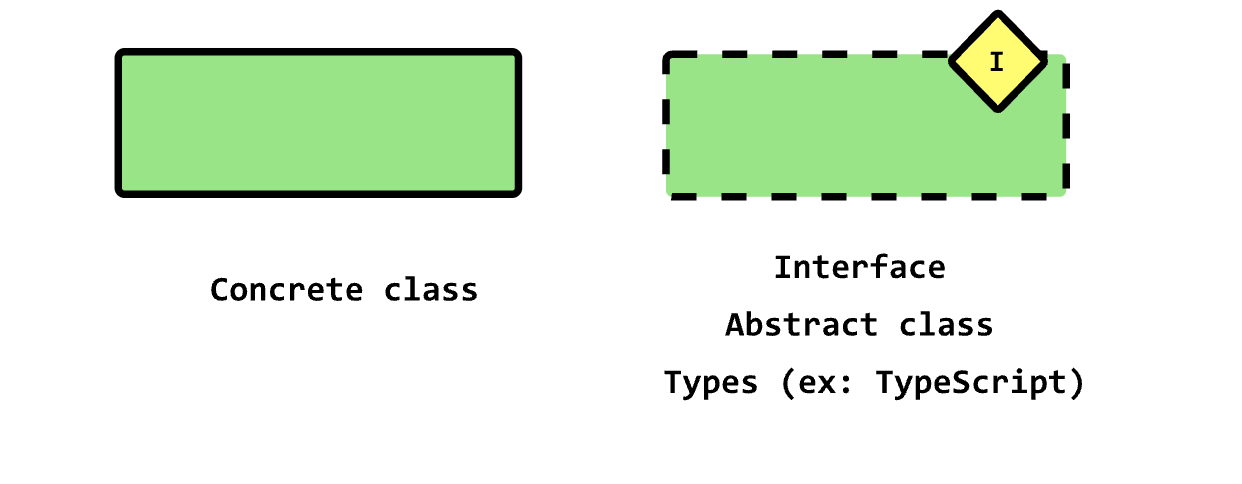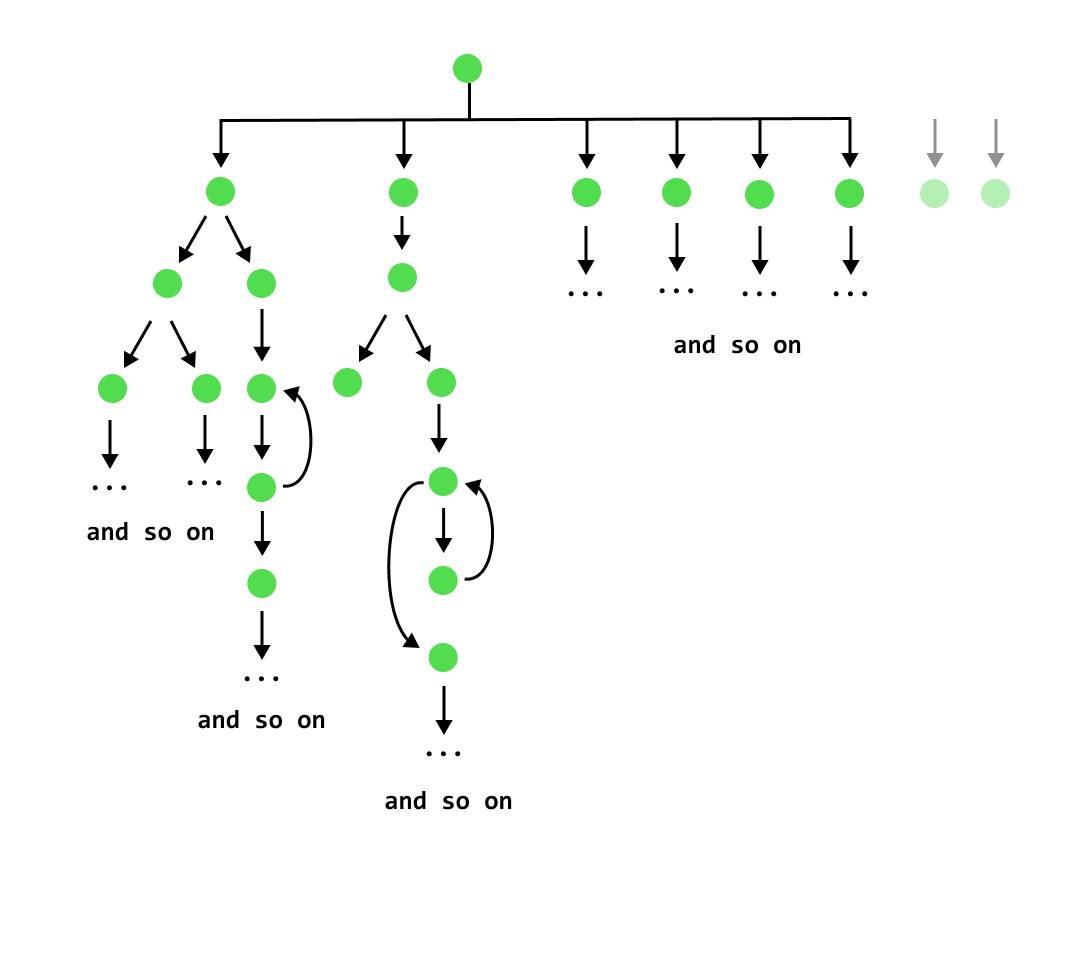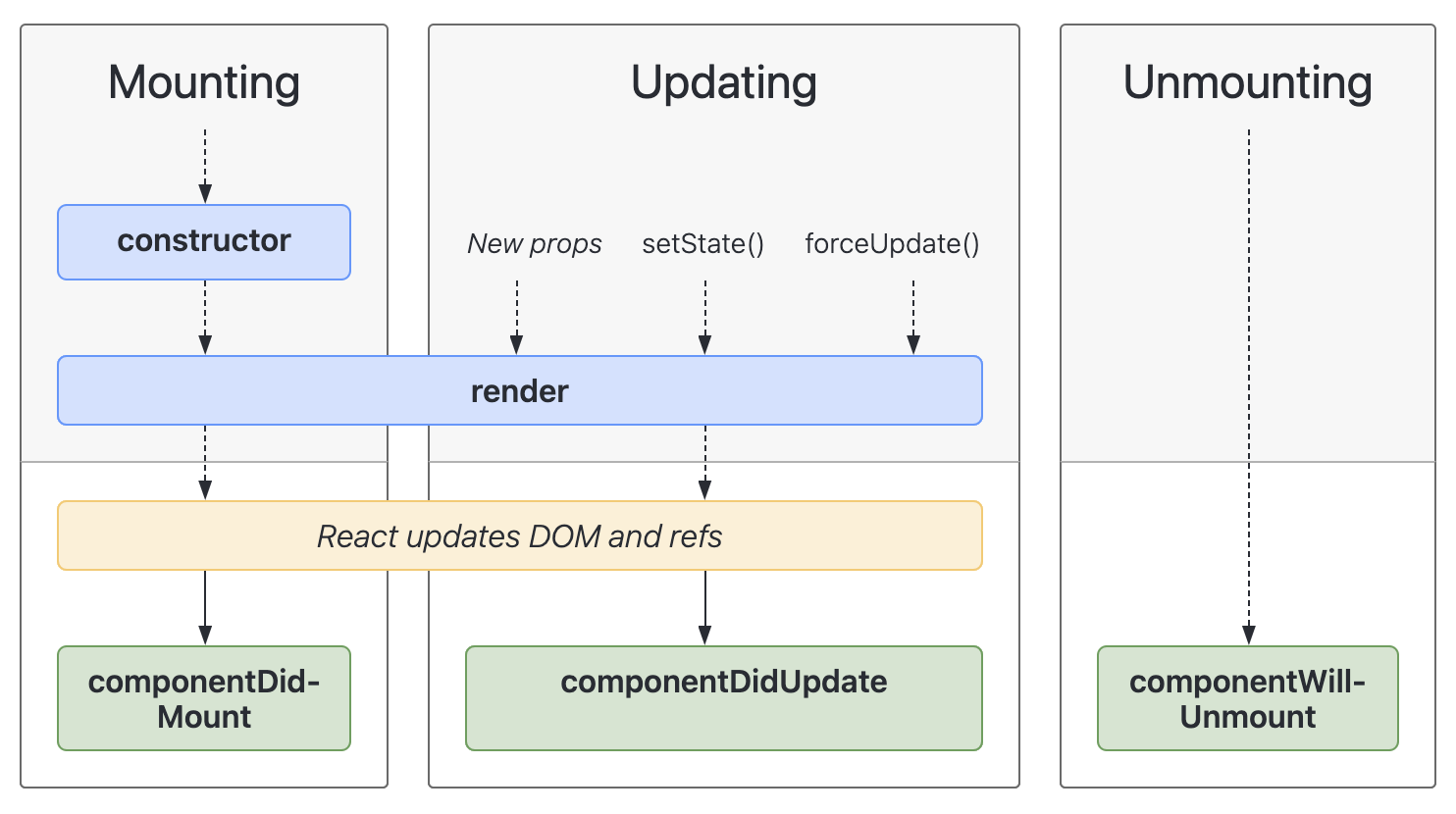When to Use TypeScript Abstract Classes

If you're just getting started with object-oriented programming, the notion of an abstract class may seem a little foreign. Abstraction is one of the key ideas from object-oriented programming, and abstract classes are one of the two tools that OO provides to implement abstraction.
In this article, we'll learn all about abstraction, abstract classes, and everyday use cases for using them in your projects.
Let's start by understanding abstraction: perhaps the most crucial concept from object-oriented programming.
What is abstraction?
Abstraction is perhaps the most important element of design.
By selectively choosing which details to include, we can make concepts appear less complex, increase understandability, communicativeness, readability, and so on.
As programmers, we rely on abstraction to solve advanced architectural challenges. Abstraction removes the need to implement all the low-level details upfront; instead, we can focus on the high-level and figure out the specifics later.
You could also say that abstraction allows us to spend more time on the declarative (asking for what we want) and less on the imperative (specifying exactly how it'll work).
Concretions & contracts
We deal primarily with two types of classes in object-oriented programming languages: concretions and contracts.

Concrete classes are real, and we can construct objects from them to use at runtime using the new keyword.
They're what most of us end up using when we first start learning object-oriented programming.
// Concrete class
class User {
private name: string;
public getName (): string {
return this.name;
}
constructor (name: string) {
this.name = name;
}
}
const user = new User('Khalil'); // Creating an instance
// of a concrete classOn the other hand, contracts are blueprints that specify the properties and methods that a concretion should have if we want to create one from it. We can use them to contractualize the valid structure of an object or a class.
// Interface (abstraction)
interface Box {
length: number;
width: number;
}
const boxOne: Box = { length: 1, width: 2 }; // ✅ Valid! Has all props
const boxTwo: Box = { length: 1 }; // ❌ Not valid, missing prop// Interface (abstraction)
interface Box {
length: number;
width: number;
}
// Concrete class implementing Box abstraction
class MobileBox implements Box { // ✅ Valid! Implements all necessary props
public length: number;
public width: number;
constructor (length: number, width: number) {
this.length = length;
this.width = width;
}
}
let boxThree = new MobileBox(1, 2); How to create contracts in OO languages
In the previous examples, we used the interface keyword to create contracts. However, when we speak of contracts in object-oriented programming, we're generally referring to one of two tools:
- interfaces (i.e.: the
interfacekeyword) or - abstract classes (i.e.: the
abstractkeyword in front of a class)
Type systems as a contract tool: We should also note that we can use types to implement contracts if we use a language with a type system (such as TypeScript).
Why are contracts necessary?
Perhaps the most foundational ideas are that:
- you are always diverging or converging when you work
- in solving any problem, you always have to utilize a bit of upfront (convergent) design and a bit of emergent (divergent) design
- contracts are the tool we use to keep these two worlds in sync
- we use contracts to cross architectural boundaries, synchronize components...
There are so many powerful things we can use contracts to do.
So many problems we can solve.
A key one is that it allows us to create a plugin architecture, separating the high-level from the low-level.
In traditional structured programming, we couldn't safely implement what's known as dynamic binding — the ability to refer to a contract (something that doesn't concretely exist) and feel confident that the dependency would work with our code.
For example, imagine we were writing the code for an OS that made USB ports work. We’d need to ensure that every device plugged in can function and do its job, but in reality, there are a lot of different things that can be plugged in. What should we do? Write some code for each and every single one of those?
switch (deviceType) {
case 'MOUSE':
mouseSubroutine();
case 'HEADPHONES':
headphonesSubroutine();
case 'MIDI_KEYBOARD':
midiKeyboardSubroutine();
case 'WEBCAM':
webcamSubroutine();
...
}That won't scale. What happens when there's a new type of USB device? Come in and write more code? No, this is architecturally poor. Without contracts, we'd continue to increase the complexity of our USB port code as we add support for more devices over time. We'd see our simple program blow up into an enormous and ever-growing control-flow graph of subroutines on subroutines.

What if there was a way to invert this dependency relationship? What if we could focus on defining a contract containing all the necessary things that a USB device needs to provide if they want it to work with the OS — and leave it to future USB device developers to implement them?
We are asking: what if we could program against an contract instead of an implementation (a concretion)?
We can!
This is the idea of ports and adapters. It's probably the simplest way to understand this phenomenon. Consider the contract as the port. It defines a what a valid adapter is. With this design, we create a plugin architecture. This removes the need for us to need to define every single last USB device and leave it to future developers to implement compatible adapters based on our contract.
Abstraction is deeply related to the ideas of:
- Liskov Substitution Principle — since we define valid subtypes, each implementation should work and be interchangeable as long as it implements the contract.
- Dependency Inversion — we do not directly depend on the concretions; instead, we rely on the abstraction that the concretions depend on; this keeps our core code unit testable.
- Inversion of Control — we can give the client developer the ability to customize behavior by inverting program control to the client developer at hook points.
Next, let's take a look at the mechanics behind creating and using abstract classes in TypeScript.
Abstract class in TypeScript
The most common use of abstract classes in TypeScript is to locate some common behavior to share within related subclasses. However, it's essential to know that you cannot instantiate an abstract class. Therefore, the only way to access shared behavior is to extend the abstract class with a subclass.
For a simple demonstration, we'll imagine that we're selling digital books (PDF, EPUB, Kindle, etc.) — all of which have some common logic and their specific logic as well. To start, we'll build the base Book contract to put the common logic.
To declare an abstract class, we use the abstract keyword.
abstract class Book {
// ..
}Defining common properties
Within this Book abstract class, we can then decide on the contract for a Book. Let us say that all Book subclasses must have author and title properties. We can define them as instance variables and accept them as input using the abstract class constructor.
abstract class Book {
private author: string; private title: string;
constructor (author: string, title: string) {
this.author = author;
this.title = title;
}
}Defining common logic
We can then can place some of the common logic within the Book abstract class using regular methods.
abstract class Book {
private author: string;
private title: string;
constructor (author: string, title: string) {
this.author = author;
this.title = title;
}
// Common methods
public getBookTitle (): string { return this.title; }
public getBookAuthor (): string { return this.title; }}Remember that an abstract class is still a contract, after all.
Even though it looks like a class, really, it's mostly comparable to an interface.
That means we can't instantiate contracts directly (because they don't really exist, they're theoretical).
Sure, we're putting some logic on the abstract class, and this is what makes it special and unique from an interface...
Imagine levels of realness. You'd have:
- interfaces/types = least real / theoretical (defines the 'what')
- abstract classes = midpoint (can define some of the 'how', but can't create)
- (concrete) classes = completely real, defines the 'how'
Trying anyway for demonstration purposes, you'd notice that we'd we get an error that looks like this:
let book = new Book ( // ❌ error TS2511: Cannot create an
'Robert Greene', // instance of an abstract class.
'The Laws of Human Nature'
);So then, what shall we do? We'll introduce one of our specific types of Book concretions — the PDF class. We extend/inherit the abstract Book class as a new subclass to hook it up.
class PDF extends Book { // Extends the abstraction
private belongsToEmail: string;
constructor (author: string, title: string, belongsToEmail: string) {
super(author, title); // Must call super on subclass
this.belongsToEmail = belongsToEmail;
}
}Since PDF is a concrete class, we can instantiate it. The PDF object has all of the properties and methods of the Book abstraction, so we can call getBookTitle and getBookAuthor as if it were originally declared on the PDF class.
let book: PDF = new PDF(
'Robert Greene',
'The Laws of Human Nature',
'khalil@khalilstemmler.com'
);
book.getBookTitle(); // "The Laws of Human Nature"
book.getBookAuthor(); // "Robert Greene"Defining mandatory methods
Abstract classes have one last important feature: the notion of the abstract method. Abstract methods are methods that we must define on any implementing subclass.
In the abstract class, we define them like so:
abstract class Book {
private author: string;
private title: string;
constructor (author: string, title: string) {
this.author = author;
this.title = title;
}
abstract getBookType (): string; // No implementation}Notice that there is no implementation for the abstract method? That's because we implement it on the subclass.
Demonstrating with the PDF and an additional EPUB subclass, we add the required abstract method to both of them.
...
class PDF extends Book {
...
getBookType (): string { // Must implement this return 'PDF'; }}
class EPUB extends Book {
constructor (author: string, title: string) {
super(author, title);
}
getBookType (): string { // Must implement this return 'EPUB'; }}Failing to implement the required abstract methods will fail to make the class complete and concrete — this means we'll run into errors when trying to compile our code or create instances.
There are good reasons for using this technique. The best way to understand is to consider real-world scenarios. We'll explore this in the next section.
Use cases (when to use abstract classes)
Now that we know the mechanics behind how abstract classes work, let's talk about real-life use cases for it — scenarios you are likely to encounter.
There are two primary use cases for needing to use abstract classes:
- Sharing common behavior and
- Template method pattern (framework hook methods)
1. Sharing common behavior (base HTTP class example)
A prevalent scenario is the need to perform HTTP data-fetching logic within a front-end application that relies on multiple backend APIs endpoints.
Let’s say that we definitely need to fetch data from:
- a
UsersAPI located at example.com/users - a
ReviewsAPI located at example.com/reviews
What’s the common logic?
- Setting up an HTTP library (like Axios)
- Setting up interceptors to set up common refetching logic (say, like when an access token expires)
- Performing HTTP methods
Using an abstract class, we can define a BaseAPI as an abstraction with some of the implementation already provided.
export abstract class BaseAPI {
protected baseUrl: string;
private axiosInstance: AxiosInstance | any = null;
constructor (baseUrl: string) {
this.baseUrl = baseUrl
this.axiosInstance = axios.create({})
this.enableInterceptors();
}
private enableInterceptors () {
// Here's where you can define common refetching logic
}
protected get (url: string, params?: any, headers?: any): Promise<any> {
return this.getAxiosInstance({
method: 'GET',
url: `${this.baseUrl}${url}`,
params: params ? params : null,
headers: headers ? headers : null
})
}
protected post (url: string, params?: any, headers?: any): Promise<any> {
return this.getAxiosInstance({
method: 'POST',
url: `${this.baseUrl}${url}`,
params: params ? params : null,
headers: headers ? headers : null
})
}
} Here, we've placed the low-level behavior within a BaseAPI contract. Now we can define the high-level behavior — the rich stuff — in the subclasses.
export class UsersAPI extends BaseAPI {
constructor () {
super('http://example.com/users');
}
// High-level functionality
async getAllUsers (): Promise<User[]> { let response = await this.get('/'); return response.data.users as User[]; }
...
}This pattern is widespread. Apollo's REST DataSource API builds on the same abstract class approach.
2. Template method design pattern (front-end libraries & frameworks example)
The template method design pattern (also known as the template pattern) is a behavioral design pattern that works by defining the skeleton of the algorithm in an abstract class and deferring some of the steps off to subclasses.
Because it allows for customizability, the template method pattern is widespread in libraries and frameworks like Angular, Vue, or React.js.
To demonstrate, let's consider older versions of React.js, the popular library for building front-end interfaces.
When you create a React component using class-based components, what’s the one method you absolutely positively need to implement? That’d be the render method, right?
So then, a simplistic version of the abstract class for a component could look like the following:
abstract class Component {
private props: any;
private state: any;
abstract render (): void; // Mandatory
}And then to use it, we’d need to extend the Component contract and implement the render method.
class Box extends Component {
render () {
// Must implement this method
}
}We need to implement the render method because it is a critical part of the work involved with deciding what gets created on screen. It's up to the client developer (us) to determine what HTML & CSS the browser should show. The library can't decide on that for us, so we need to provide it.
An abstract class is a suitable tool for this problem is because there is an algorithm running behind the scenes — an algorithm in which the render step is but a single step amongst many.

We can see that there are three distinct phases to React: mounting, updating, and unmounting. React's abstract class further gives us (the client developer) the ability to customize our components by connecting the ability to hook into various lifecycle events. For example, you can perform some behavior as soon as your component mounts (componentDidMount), when it updates (componentDidUpdate), and when it's about to unmount (componentWillUnmount).
Another vastly simplistic (and not entirely accurate or complete) depiction of what that may look like behind the scenes is like this:
abstract class Component {
private props: any;
private state: any;
abstract render (): void;
// Algorithm for mounting
constructor () {
this.render();
this.componentDidMount();
}
// The general algorithm for updating. Called when new props occur,
// when setState is called or when forceUpdate is called
onUpdate () {
if (this.componentShouldUpdate()) {
this.render();
this.componentDidUpdate();
}
}
// Algorithm for unmounting
onUnmount () {
this.componentWillUnmount();
// Complete unmounting
}
public componentDidMount (): void {
// No implementation lifecycle method, allow the client to override
}
public componentDidUpdate (): void {
// No implementation lifecycle method, allow the client to override
}
public componentWillUnmount (): void {
// No implementation lifecycle method, allow the client to override
}
private componentShouldUpdate (): boolean {
// Determines if the component should update
...
}
}And now, a customized component subclass can plug in behavior within those key lifecycle hook methods. This is the concept of Inversion of Control.
class Box extends Component {
constructor () {
super();
}
componentDidMount () {
// (Optional) Perform custom logic
}
componentDidUpdate () {
// (Optional) Perform custom logic
}
componentWillUnmount () {
// (Optional) Perform custom logic
}
render () {
// Must implement this method
}
}So as a framework designer, the Template Method design pattern is attractive when:
- You need the client to implement a step of the algorithm → so you make that step an abstract method
- You want to provide the ability for clients to customize behavior at various steps of the algorithm → so you expose optional lifecycle methods to the client
In summary
- Object-oriented programs contain concretions and contracts. Abstract classes are one of two ways we can implement contracts in object-oriented programming.
- Use abstract classes to define shared behavior or implement the Template Method pattern.
Frequently asked questions
What is an abstract class constructor for?
The abstract class constructor is used to set up properties or run other setup logic from within the abstract class so that the low-level abstract class methods can use them. We invoke the constructor by calling super on a subclass (derived class).
What does the abstract method do?
The abstract method exists to force clients to implement specific functionality necessary for the abstract class to work. We abstract away the exact details to a subclass.
What’s the difference between an interface vs. abstract class?
Interfaces and abstract classes are both examples of contracts in object-oriented programming. Where an interface can only define the properties and methods of an contract, an abstract class can define the properties and methods in addition some common behavior.
We also use the implements keyword to inherit from an interface but use the extends keyword to perform inheritance against an abstract class.
When you need an contract, default to an interface (or a type in typed languages) but opt for an abstract class when you need to define common behavior or generalize an algorithm using the Template Method design pattern.
Stay in touch!
Join 20000+ value-creating Software Essentialists getting actionable advice on how to master what matters each week. 🖖
View more in TypeScript

